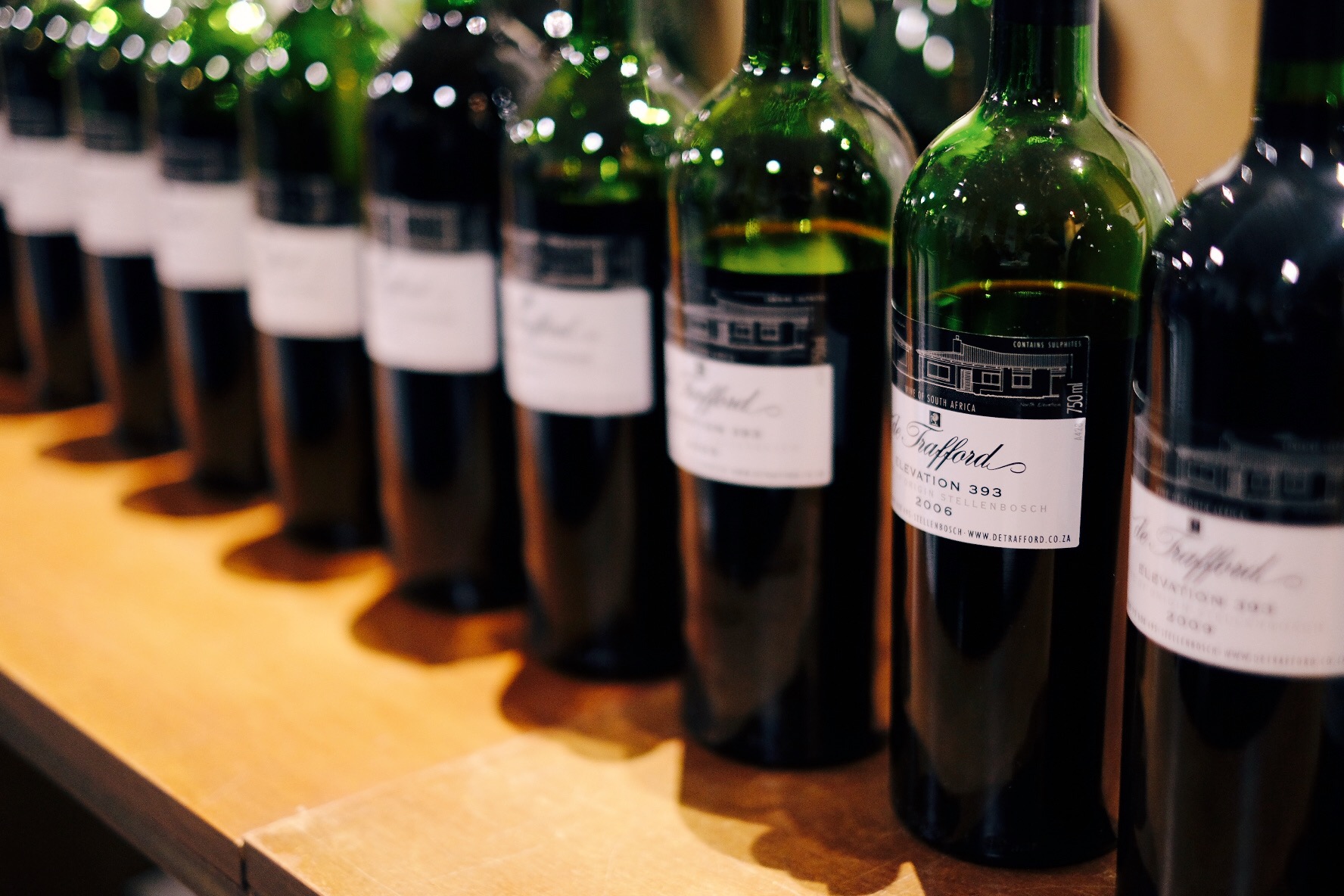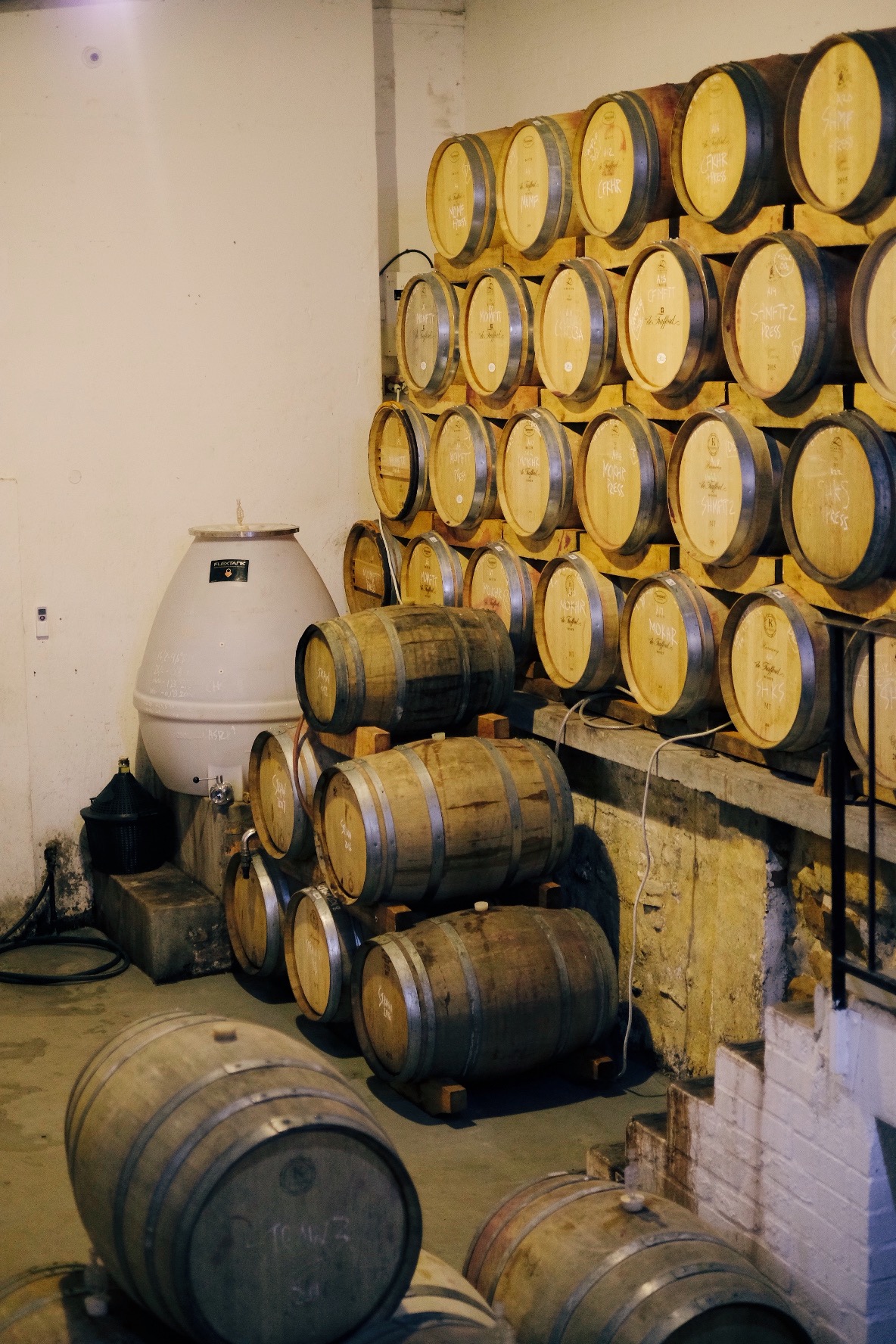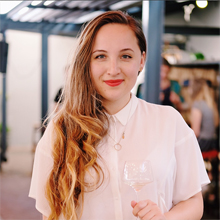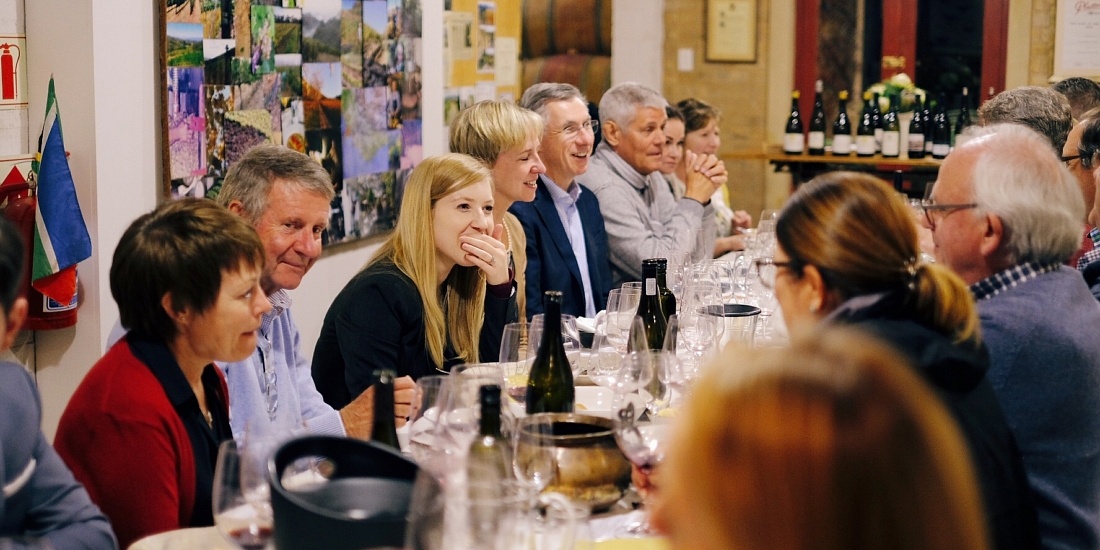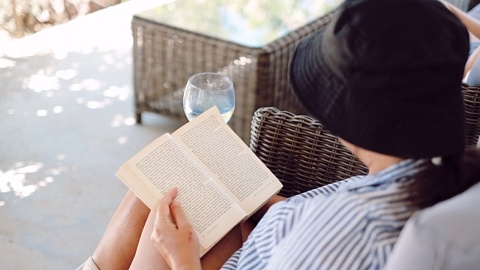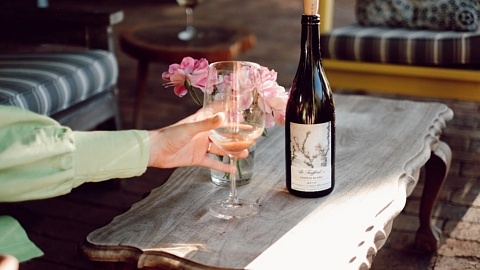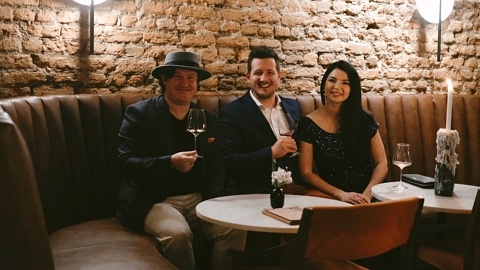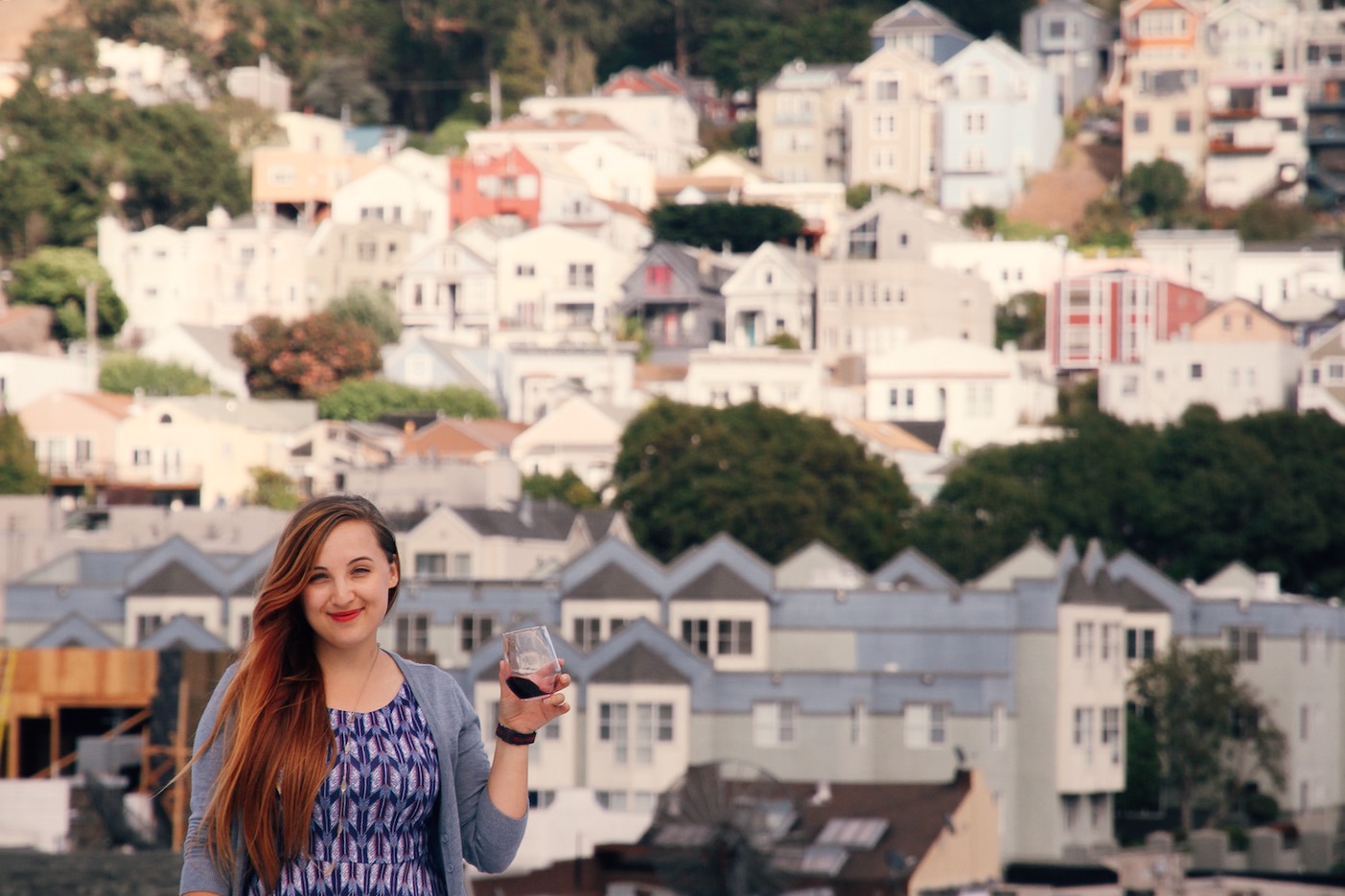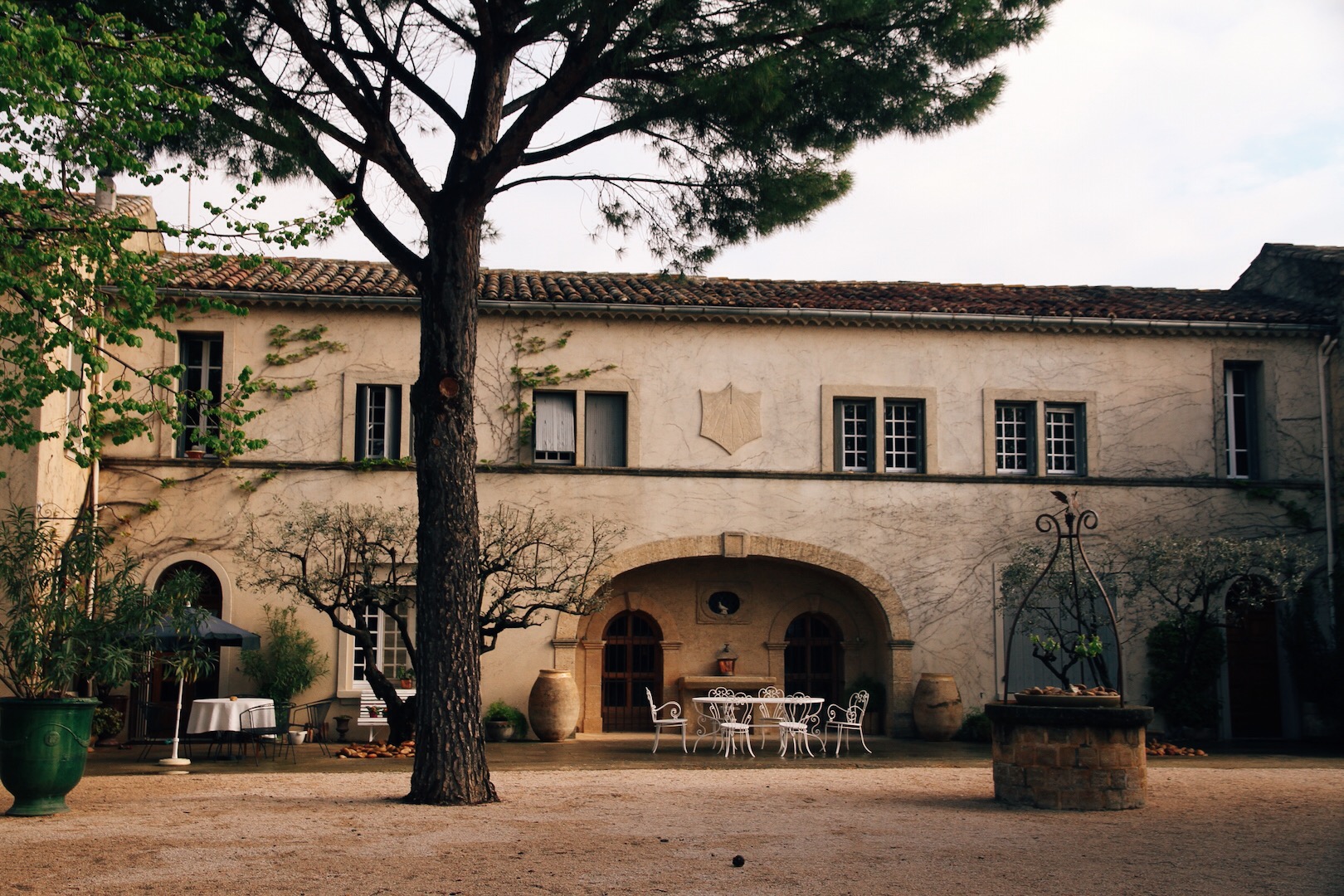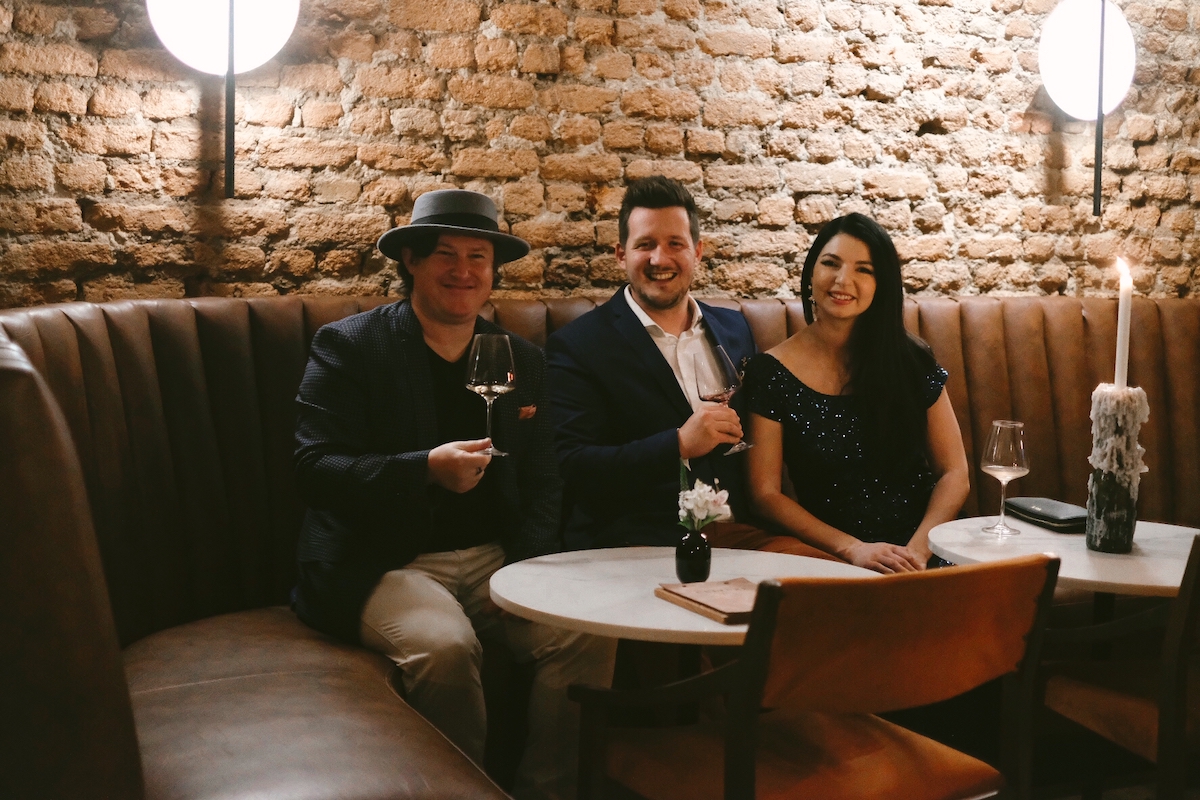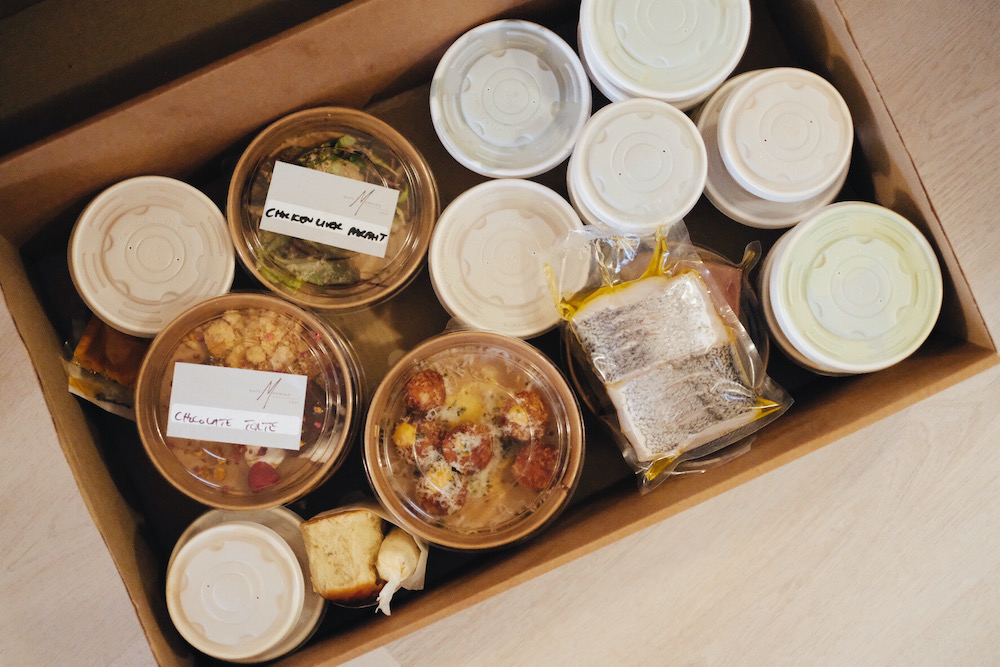Been there, done that, got the Syrah – was not our response when Gosia and I received a personal invitation from David and Rita Trafford to journey with them through the Rhône Valley, from the comfort of De Trafford’s cellar in the mountains above Stellenbosch.
To be fair, to some extent we had been there and done that, briefly – back in 2015 when we both had the chance to spend an early spring weekend in the Rhône. While freshly armed with fledgling wine knowledge after a semester of study in Burgundy, ready to soak in both the southern French sunshine and the Rhône wine culture, we were also beat after an intense exam period – resulting in us snoozing through the bus ride down to Hermitage and missing out on the – apparently – breathtaking views of the dizzyingly terraced Côte-Rôtie (oops). That major blooper aside, it was a brilliant weekend, one that we will never forget – crammed with atmospheric cellar visits, getting lost in the cobbled streets of Châteauneuf-du-Pape and indulging in intense, flavourful, bucket list-worthy wines.

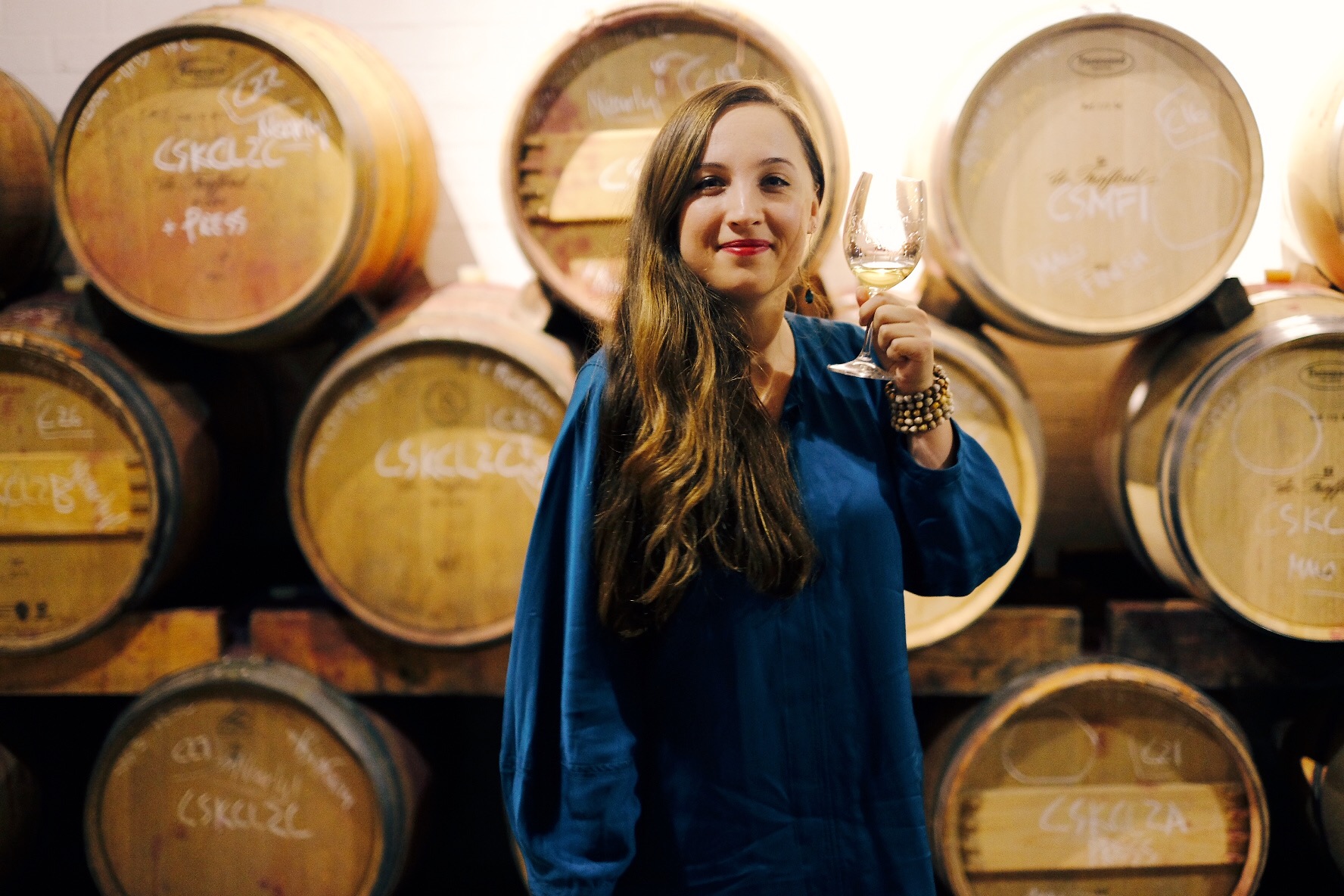 Four years later, with the memories of the Rhône fond, but beginning to blend together like an aged Beaucastel, we were thrilled to have the opportunity to revisit and reorder what we know of the majestic Valley, with one of SA’s foremost proponents of Rhône cultivars in the driving seat.
Four years later, with the memories of the Rhône fond, but beginning to blend together like an aged Beaucastel, we were thrilled to have the opportunity to revisit and reorder what we know of the majestic Valley, with one of SA’s foremost proponents of Rhône cultivars in the driving seat.
David Trafford is a worthy guide. Former architect turned winemaker, David and his artist wife Rita have been running their quality-oriented Stellenbosch winery since the early eighties, which has grown from a tiny, experimental operation to a modest production of 3500 cases annually. While their Stellenbosch mountain vineyards echo the terraced, elevated slopes of the Northern Rhône, their second property, Sijnn, established two decades later in far-flung Malgas, is home to the closest resemblance SA has to Southern Rhône terroir with its round galets, or pudding stones. In short – the Traffords have the Rhône covered.
It was on this basis that David and Rita gathered a small flock to spread their wings and catch a ride on the famous Mistral winds, with the hope of achieving a bird’s eye view of the valley. “I feel like a kid in a candy shop, with so many close friends, customers and a few special guests around me,” opened a beaming David, expressing his excitement to taste through these wines, many of which he procured on a trip to the Rhône a few years ago.

SAINT-JOSEPH
Our journey commenced in the Northern Rhône in the region of Saint-Joseph, which after David’s explanation, made a lot of sense. “You think of the Rhône as being a warm region, but parts of it are actually fairly cool. We tend to forget that the Northern Rhône is only about 200 km South of Burgundy.” It’s no surprise then, that the wines from the North tend to be elegant and restrained. Despite its age for a white, our first wine, a 2013 Saint-Joseph Marsanne from Chapoutier, one of the Rhône’s key producers, was drinking beautifully with only a hint of tertiary aromas overlaying fresh floral and yellow fruit notes. “Marsanne is quite a neutral grape,” explained David. “It needs some age to be interesting.” Like a lot of people, I couldn’t help but think. Ambitiously, Chapoutier proposes that this particular wine, despite the naturally low acidity of the grape variety, can age for 50 – 75 years. At 78 euros a bottle, we would hope so.
CONDRIEU
The next stop on our journey through the Rhône was Condrieu, an appellation bordering Côte-Rôtie which exclusively produces Viognier. “The Northern Rhône isn’t only granite – it has a mixture of soil types,” David explained as we sipped on 2012 Yves Cuilleron Condrieu, indicating, however, that the vineyard producing this particular wine is indeed planted in granitic soil, in a pocket facing the sun. “It almost over-delivers on the nose,” commented David, explaining that granite promotes acidity and bright fruit. While bursting with tropical fruit aromas, we couldn’t help but agree with André Morganthal (of Old Vine Project fame, another special guest of the evening) who felt that while both whites were good, the Sijnn White we had as a welcome drink earlier on outshone them both.
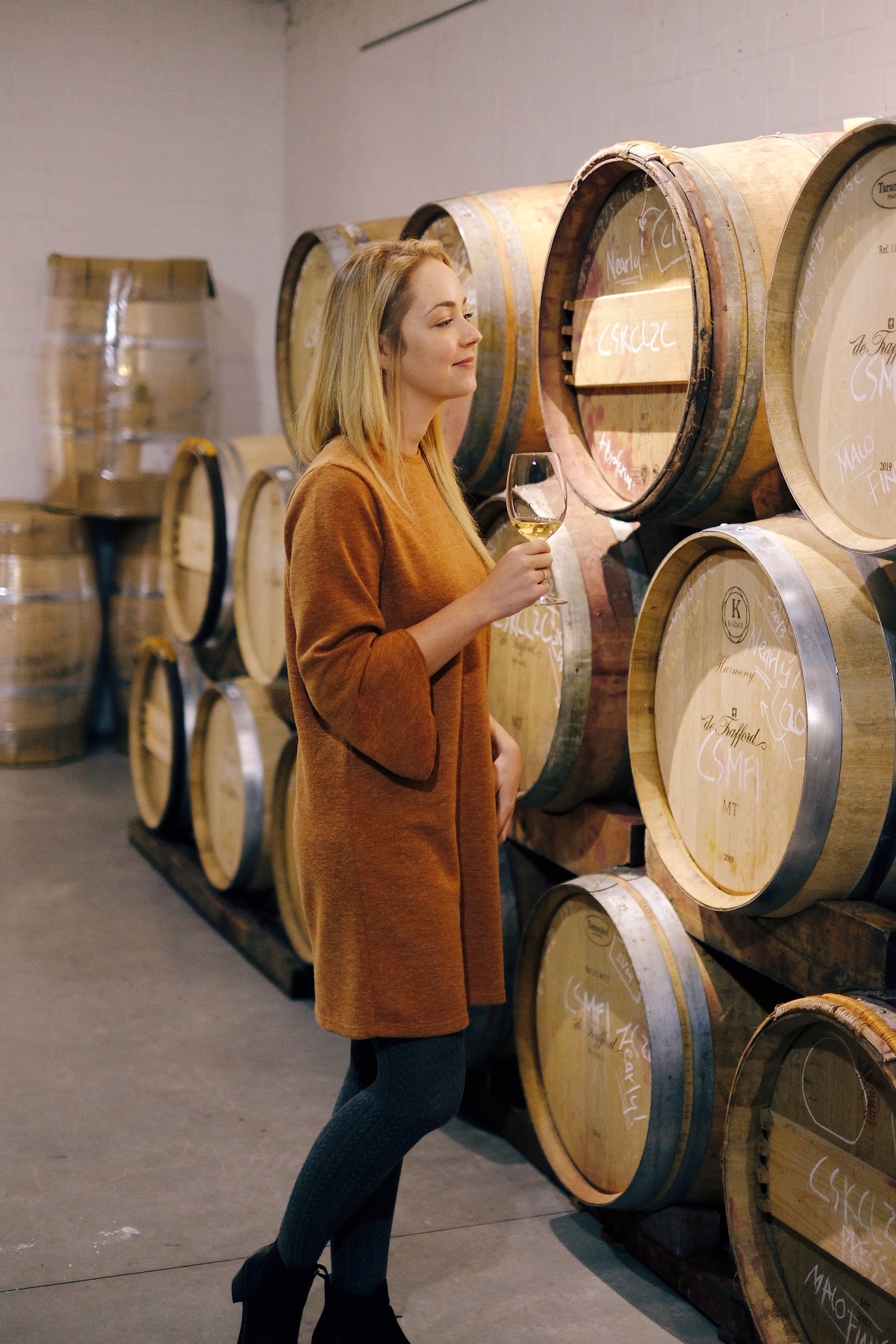
CÔTE-RÔTIE
It would be easy to infer from the name “Côte-Rôtie”, i.e. “roasted slope”, that the Côte-Rôtie is a warm place. It’s not. Rather, the name refers to the long hours of sunlight that these steep, south-facing slopes receive, which mitigate the influence of the cool continental climate and relentless Mistral wind. David introduced us to another Chapoutier – La Morderée Côte-Rôtie (100% Syrah, as is most of the region’s plantings aside from a smattering of Viognier), assuring us that though Chapoutier is one of the two big Rhône producers, the quality of their top stuff is breathtaking. This wine was no exception with a delicate nose exhibiting the dark cherry, subtle spice and pepper that Côte-Rôtie is known for, as well as crunchy tannins that melted into a smooth, supple finish.
HERMITAGE
In the same way Hermitage was where we lingered the longest on our weekend trip back in 2015, this is where we made a major pitstop on David Trafford’s tasting through the Rhône. Three south-facing hills, collectively making up what is known as Hermitage Hill, render an indelible impression – both scenery and wines. This is the heart of the Rhône, producing some of its most intense Syrahs, as well as a handful of age-worthy white blends of Marsanne and Roussanne. The 2013 Chapoutier L’Ermite Hermitage we had the privilege of tasting rendered us speechless twice – firstly, for the incredible depth, complexity and persistence of the wine, and secondly, for the price tag (at over 500 euros a bottle, we won’t be affording this one on our own dime any time soon). It speaks to David and Rita’s incredible generosity that they were willing to share this spectacular wine with us, which took us right back to the granitic, wind-blown soils of Hermitage.
CORNAS
Sailing downwind, our next stop was Cornas. “Cornas has a reputation for big, heavy wines, but to me, this is more like a Côte-Rôtie,” David remarked of the 2013 Franck Balthazar Chaillot Cornas. It was proof that one can’t generalize – but in less famous regions, it pays off to search for the quality producers, who take tremendous care in both vineyard and cellar. With fruit predominantly sourced from a vineyard planted in 1914, whole bunch fermented and matured in 600L barrels, this was a wine that had clearly been made thoughtfully.
GIGONDAS
“Grenache is sometimes considered the Pinot Noir of the South,” remarked David, as we crossed over from the Northern Rhône to the South, touching down in Gigondas. With its light character, it producers surprisingly elegant wines for such a warm climate – not unlike those from Swartland. The name Gigondas is an adapted version of the Latin word jocunditas, meaning “exuberant pleasure” – and both exuberant and pleasurable the wines from this region sure are, exhibiting bright red fruit offset with deep, earthy notes. While sampling David’s 2013 Château de Saint Cosme “Le Claux” Gigondas, I couldn’t help but think it was like if Pinot Noir took a Summer holiday in the South of France and came back a bit riper and fuller.
CHÂTEAUNEUF-DU-PAPE
Like our Rhône weekend back in 2015, this journey came to an end at one of the most famous appellations of the Southern Rhône – Châteauneuf-du-Pape. When we visited back then, it felt like a wine wonderland with some of the most charming cobbled streets and vineyard views we’d ever laid eyes on. But there is trouble in Paradise. “They’re really struggling with climate change in Châteauneuf-du-Pape,” David sighed. “They can’t fall back on irrigation the way we can.” Producing some of the most intense, alcoholic and tannic blends of the Rhône (with 18 grape varieties officially permitted), Châteauneuf-du-Pape is a sumo wrestler of the wine world – strong and robust, yet skillfully nuanced. We hope that going forward, the Clos des Papes GSM we had the pleasure of tasting retains its intense-yet-elegant confected red cherry character in vintages to come.
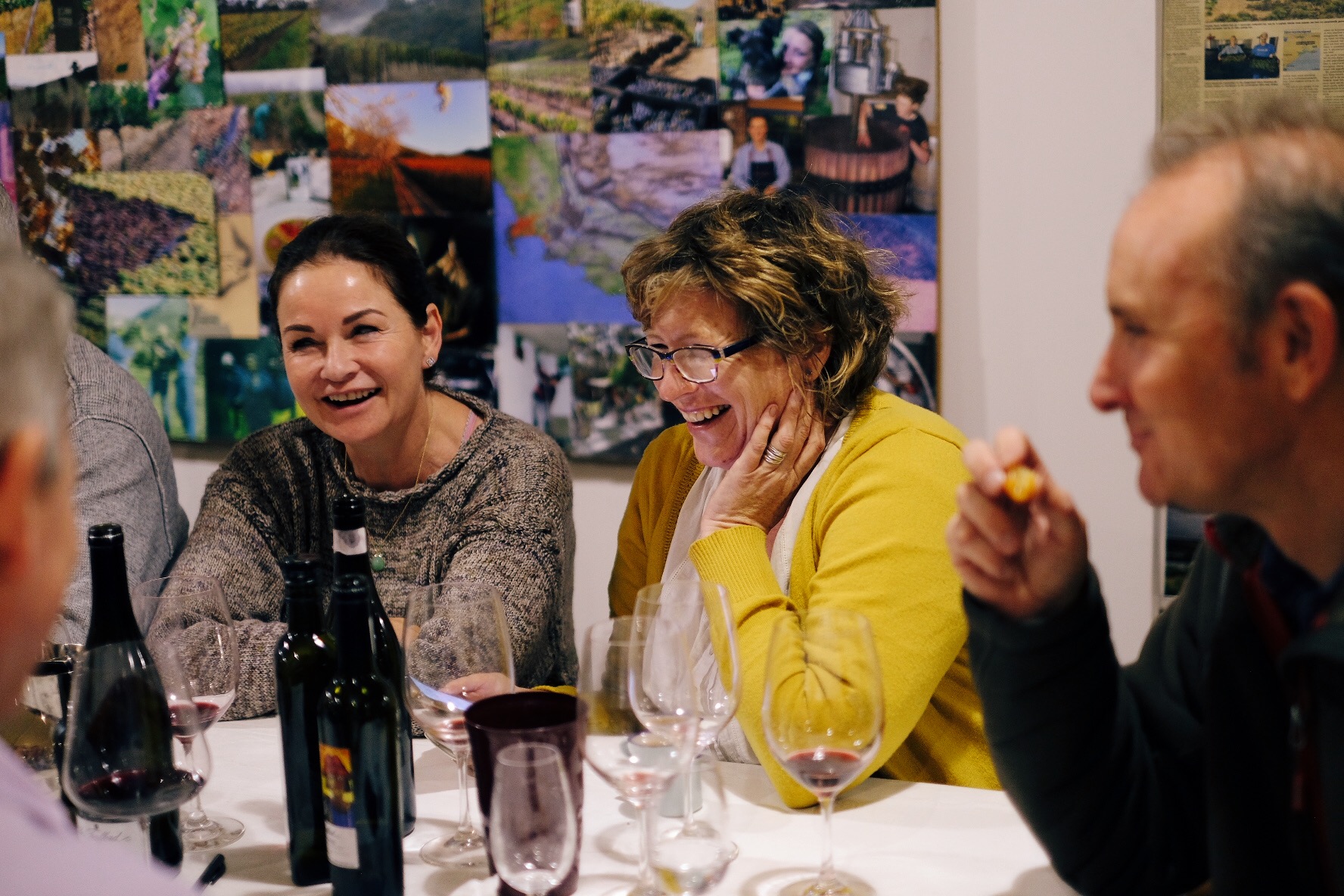
NO PLACE LIKE RHÔNE
It’s true, we concluded, at the end of this epic journey: there’s no place like Rhône. That said, some of our favourite wines of the night, which we enjoyed with a bowl of Rita’s hearty lamb stew, were the Sijnn White and Red, De Trafford’s 393 Syrah and a 2001 De Trafford Pinot Noir that all held their own, not at all amiss in the company of these Rhône superstars. It was at the end of the evening we realised, after retracing our steps, how fortunate we are in SA to not have to venture far – to feel right at Rhône.
Find Rhône and Rhône-style SA gems over at Port2Port
Words: Kristen Duff | Images: Kristen Duff & Gosia Podgorska
